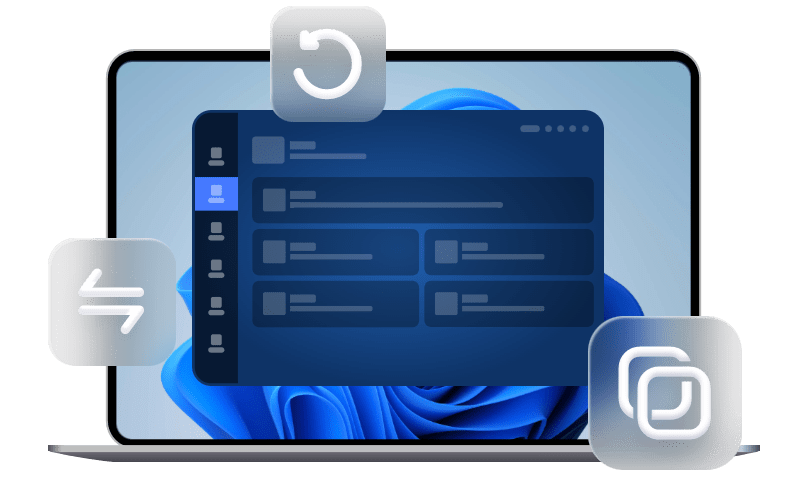Top 2 Ways to Backup Gmail to Dropbox | Easy and Secure
Want to backup Gmail emails to Dropbox? Both Google Takeout and professional backup software can give you a hand. Scroll down to learn more.
Need to backup Gmail to Dropbox
Gmail is a widely-used email client and Dropbox is popular cloud storage. If you have both Gmail and Dropbox accounts, you may want to backup Gmail to Dropbox for these two reasons:
- Protect important emails: your email data can be damaged in the event of hard drive crash, virus attack, and cyberattack, etc. To ensure your Gmail emails’ security, you can backup them to Dropbox.
- Free up space: you only get 15 GB of free storage shared across Google Drive, Gmail, and Google Photos. To release space in Gmail, you can save old emails to Dropbox.
Can you save emails to Dropbox? There are two effective methods available.
👉 #1. Save Gmail emails to Dropbox using Google Takeout
👉 #2. Backup Gmail emails to Dropbox via professional backup software🔥
#1. Save Gmail emails to Dropbox using Google Takeout
Google Takeout is a free tool used to export Google data for backup. It supports 51 types of data including mail, Drive content, calendars, browser bookmarks, and even your activity on YouTube. Follow the instructions below to save Gmail emails to Dropbox:
- Log in to Google Takeout.
- At the top of the page, click on Deselect all. Then go through the list and check the Mail option.
- (Optional) Click All Mail data included, and you can see Include all messages in Mail is selected by default. This option will export emails from the Archived, Chat, Drafts, Inbox, Sent and Starred folders. You can uncheck Include all messages in Mail and choose your desired folders to export from.
- Click Next step to continue.
- In the next screen, do more export settings:
- Destination: choose Add to Dropbox. It will upload the exported files to Dropbox automatically.
- Frequency: choose Export once or Export every 2 months for 1 year as per your need.
- File type & size: choose .zip under File type so that it can be opened on almost any computer. You can also set the maximum file size.
- Click Link accounts and create export to continue.
- Google Download Your Data will ask for permission to access its own folder in Dropbox. Click Allow.
- Verify your Google account to begin export. When the export process is finished, click Open in Dropbox to check if the exported files are there.
Note: The time the data export process will take depends on the number of mailbox items and the Internet bandwidth. It can take hours or even days to complete. You’ll receive an email when your export is done.
Restore Gmail emails from Dropbox
- Log in to your Dropbox.
- Go to the folder Apps > Google Download Your Data. Then download the ZIP file to your computer.
- Open the ZIP file on your computer. You can see the backed up emails are in the MBOX format. An MBOX file cannot be imported to Gmail directly. You’ll need another mail client like Thunderbird or third-party software to import MBOX files to Gmail.
#2. Backup Gmail emails to Dropbox via professional backup software
In addition to Google Takeout, the best email backup software – AOMEI Backupper Professional can also do you a favor. You can benefit a lot from its following features:
- It enables you to backup all of your emails, contacts, notes, calendars, and tasks in your email account.
- It supports Outlook, Gmail, Hotmail, and any other email accounts added into Outlook client.
- You can choose different devices as the backup location, such as backup Gmail to OneDrive, Dropbox, local/external hard drive, USB flash drive, and NAS device, etc.
- You are allowed to backup your emails daily, weekly or monthly using the “Schedule Backup” feature.
Download AOMEI Backupper to have a try.
To backup Gmail emails to Dropbox with AOMEI Backupper, you need to do the following preparations:
- Download and install Dropbox desktop app, and then sign in with your account.
- Add your Gmail account to Outlook client.
Now follow the guidance below:
- Install and launch AOMEI Backupper. Then click Backup and select Outlook Backup.
- Click Add Outlook Data. In the popup window, select the email folder(s) under your Gmail account as the backup source. You can also select the whole Gmail folder.
- Click the destination box and choose Select a cloud drive from the drop-down menu.
- Select Dropbox and click OK. If you cannot find Dropbox in the list, then click Cancel and choose Select a local path in the destination box to manually navigate to the Dropbox local folder.
- Customize your backup task with Options, Schedule Backup and Backup Scheme as necessary. Finally, click Start Backup to begin backing up Gmail emails to Dropbox.
Restore Gmail emails with AOMEI Backupper
To restore Gmail emails with AOMEI Backupper, just run the program, click Restore > Select Task or Select Image File, and follow the wizard to finish the recovery process.
Wrapping things up
There are two methods offered in this article to help you backup Gmail to Dropbox. If you use Google Takeout to backup Gmail emails, the backup process may be long and you’ll need another tool to restore from the exported MBOX files. AOMEI Backupper has integrated the backup and restore functions, and it enables you to backup Gmail automatically with the “Schedule Backup” feature.
What’s more, it is powerful disk clone software. You can use it to clone dynamic disk to basic without disk conversion. Just give it a shot!

